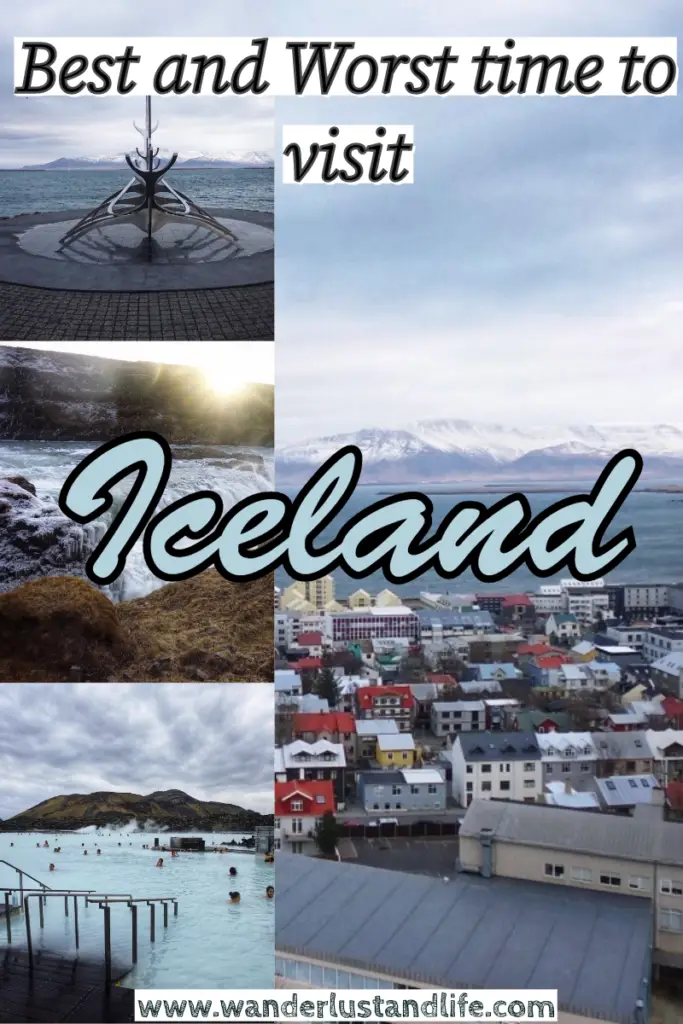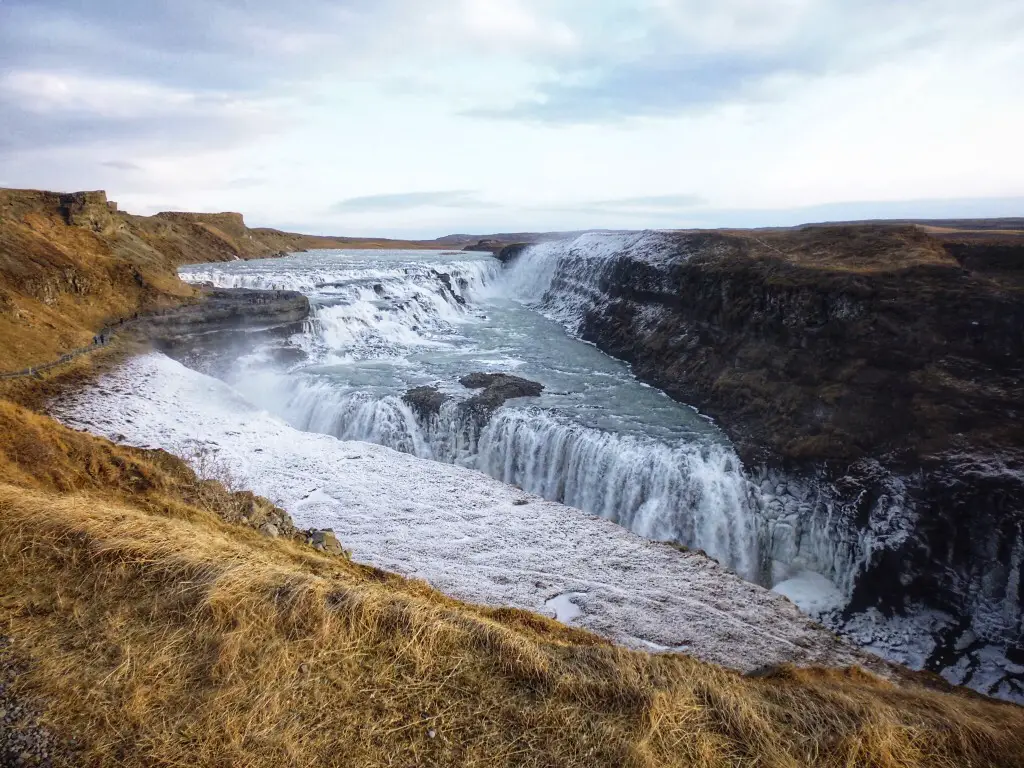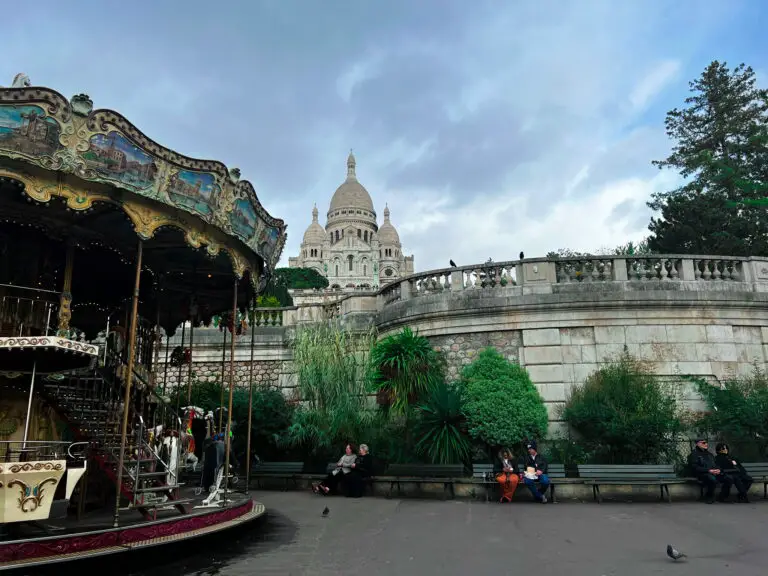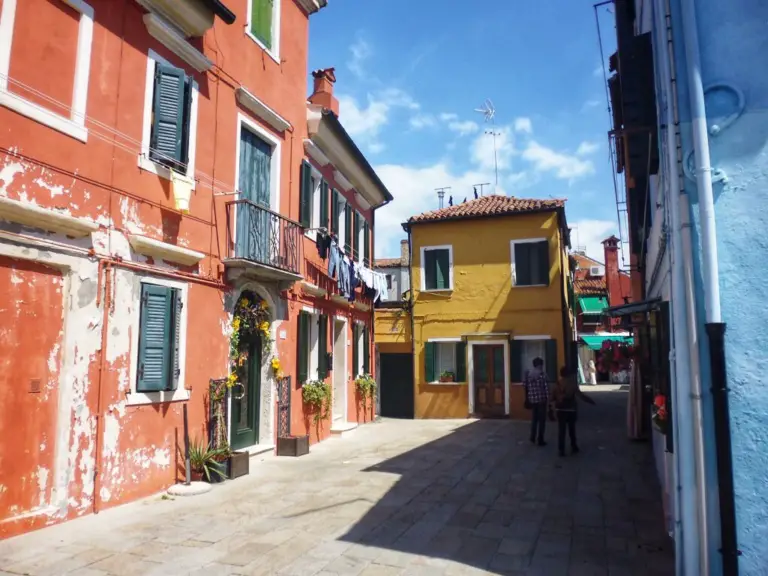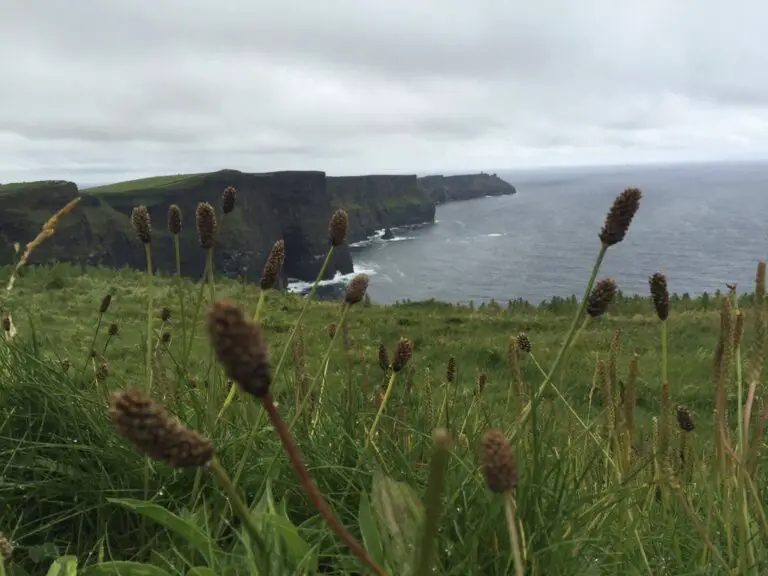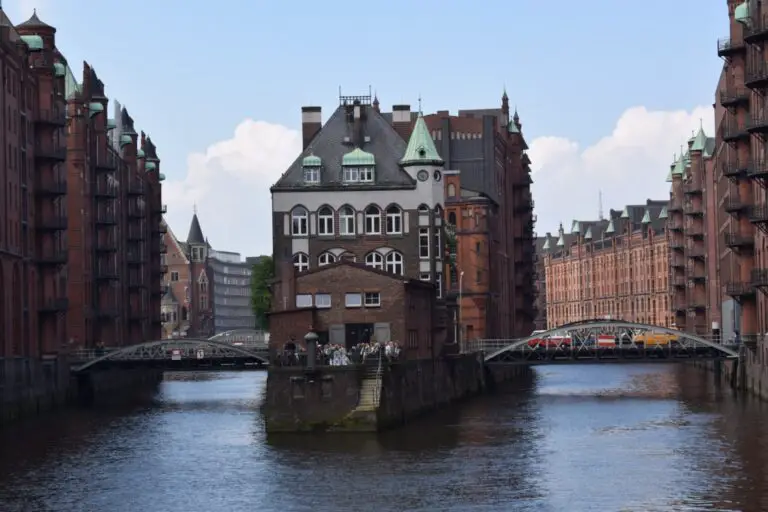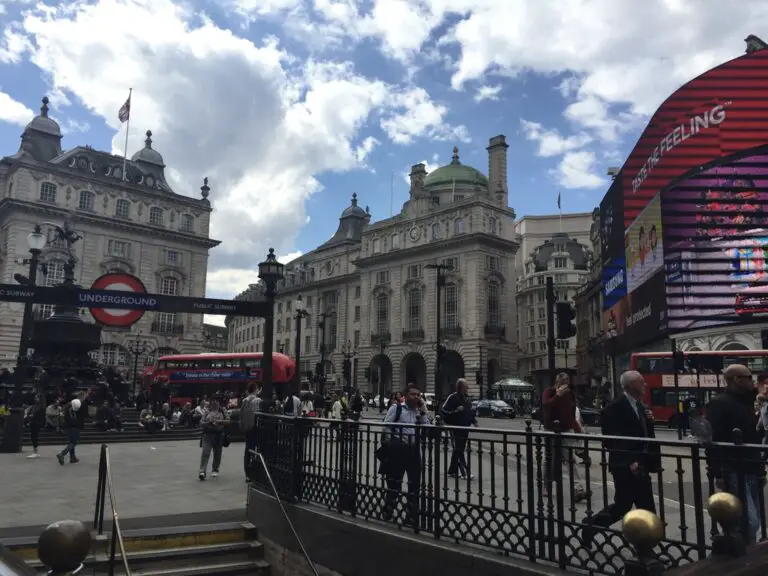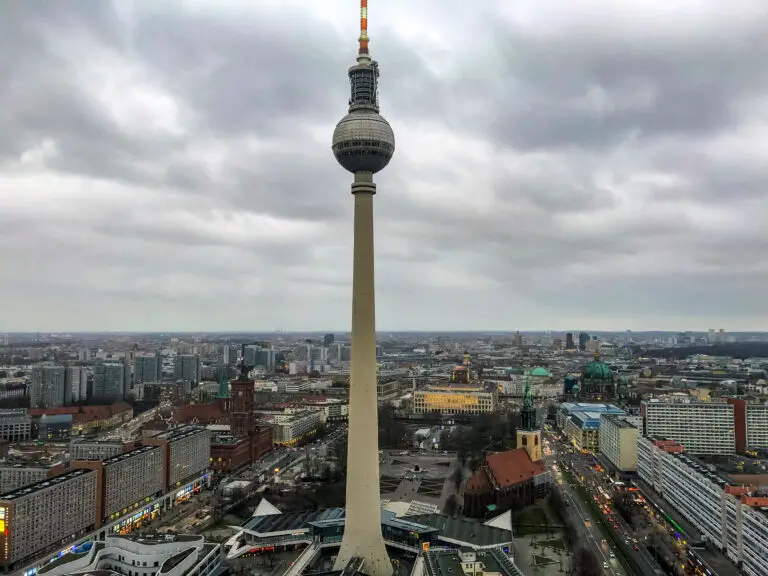The best and worst time to visit Iceland: Choosing the optimal time for your visit
Are you planning a trip to Iceland but wondering when you should visit? In this guide we go through, the best and worst time to visit Iceland in detail, to help you decide when to visit. We will also go through a month by month account, as well as looking at factors like weather, crowds, and costs.
Disclaimer: This post contains affiliate links, so if you use these links to buy something we may earn a commission, at no cost to you. Thank you for your support
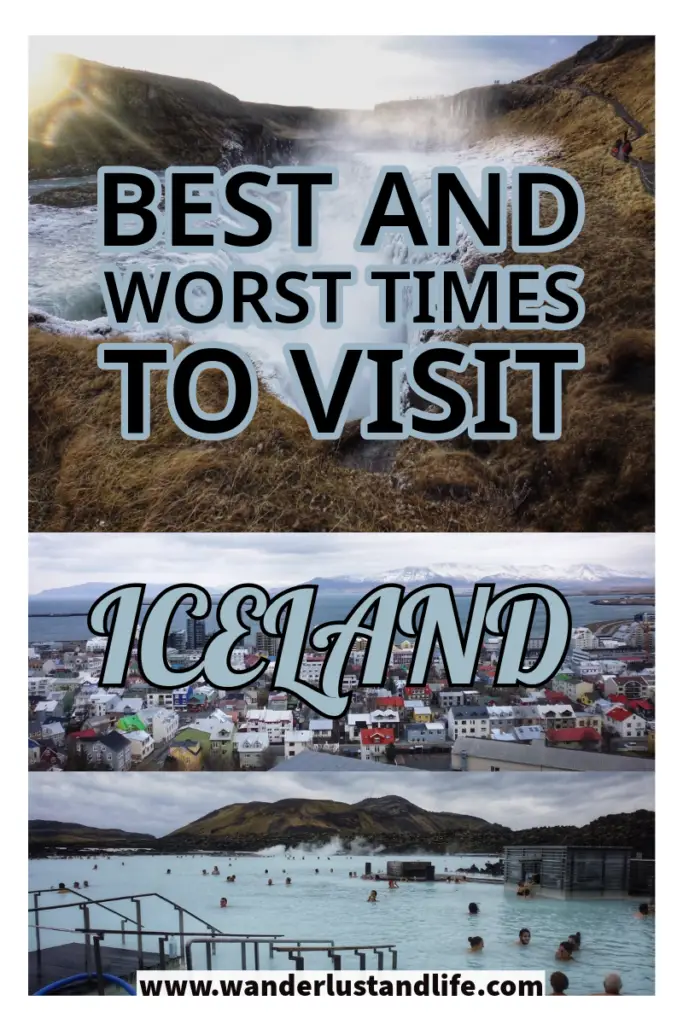
We are going to go through a month by month comparison on the best and worst time to visit Iceland shortly. But before we do here are some thoughts on the worst time to visit Iceland based on different factors.
And if you are wondering is Iceland worth visiting as a whole, here is a handy guide.
Contents
- Worst time to visit Iceland – Crowds
- Worst time to visit Iceland – Costs
- Worst time to visit Iceland – Weather
- Is January the best or worst time to visit Iceland?
- Is February the best or worst time to visit Iceland?
- Is March the best or worst time to visit Iceland?
- Is April the best or worst time to visit Iceland?
- Is May the best or worst time to visit Iceland?
- Is June the best or worst time to visit Iceland?
- Is July the best or worst time to visit Iceland?
- Is August the best or worst time to visit Iceland?
- Is September the best or worst time to visit Iceland?
- Is October the best or worst time to visit Iceland?
- Is November the best or worst time to visit Iceland?
- Is December the best or worst time to visit Iceland?
- Conclusion: The best and worst time to visit Iceland
Worst time to visit Iceland – Crowds
If you want to avoid the swarms of tourists the worst time to visit Iceland is July and August. August is particularly busy as this coincides with summer holidays for school kids in Europe. Flights are more expensive as is accommodation, and you will find yourself queuing for tourist attractions.
Worst time to visit Iceland – Costs
The summer months of June, July and August make up the worst time to visit Iceland for budget travellers. Flights and accommodation are incredibly expensive due to large numbers of tourists. If you want to find some good cheap deals, definitely do not visit Iceland in summer.
Worst time to visit Iceland – Weather
The worst time to visit Iceland when it comes to weather is probably December and January. It’s cold, dark, and can be a bit miserable. It’s especially not ideal if you are wanting to spend lots of time outdoors or do a road trip. Some roads can be impassible at this time of year, and it can be dangerous to drive if you are not used to such weather conditions.
Is January the best or worst time to visit Iceland?
January is one of the coldest and darkest months in Iceland. The country reaches the end of its Christmas and New Year festivities, and the weather is icy and snowy.
Temperatures range between -3 and 4 degrees Celsius, so as you would expect roads and paths can be icy and dangerous. Unsurprisingly January is a quieter month for visiting Iceland because of this.
The sun tends to rise at around 11am at the start of January and then around 10am towards the end of the month. The sun tends to set at around 3.45pm around the 1st of January and at the end of January it sets at 5pm.
All is not lost though. If you are visiting Iceland in January there are still lots of exciting activities you can take part in. You can do a glacier tour, go snowmobiling, and you can even see the northern lights. Or try to anyway as there is never ever guarantee you will see them.
It’s also worth noting that the Christmas season in Iceland ends on January 6th, which is the ‘thirteenth day of Christmas’. You will see people celebrating around the country, and setting off fireworks.
Overall January is a great time to visit Iceland if you don’t mind cooler weather, and you want to see the northern lights.
January however is the worst time to visit Iceland if you are expecting long bright days, or hoping to do a road trip.
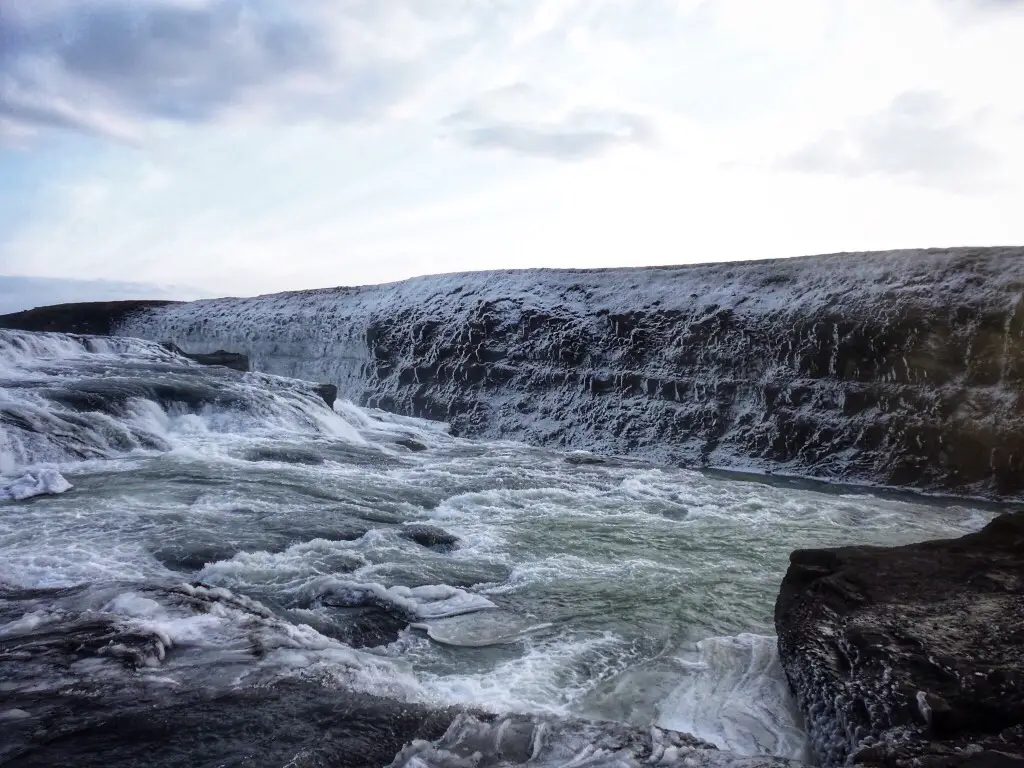
Is February the best or worst time to visit Iceland?
February is when you will quite a bit of snow in Iceland. Roads are still icy and dangerous, but the days do start to get brighter for slightly longer.
Temperatures range between -2 to 3 degrees Celsius, and weather can be quite unpredictable at this time of year.
The country is still beautiful at this time of year, particularly with a layer of snow. And despite the adverse weather conditions Iceland is still open for business with lots of winter tours in operation.
We don’t recommend hiring a car or doing a road trip just yet, as driving can be incredibly dangerous. You might set out and the weather is nice but end up in a snow or rain storm (or both).
The sun rises just after 10am in February, and slowly moves towards 8.40am at the end of the month. The sun usually sets at around 5.15pm, extending to 6.40pm by the end of the month.
If you are visiting in February you can experience the Winter Lights Festival, which happens on the first weekend of the month. There are sporting and musical events, and some fun entertainment across Reykjavik.
February is the best time to visit Iceland if you want to avoid the crowds and get involved in some fun winter activities.
However February is the worst time to visit Iceland if you are expecting bright days, and decent weather.
Is March the best or worst time to visit Iceland?
March is when you will start to notice a shift in Iceland. Daylight hours are longer, and there is a general feeling of optimism in the air. It’s still off season in Iceland so this is a great time to visit if you want cheaper deals.
A road trip might not be ideal, especially if you aren’t an experienced winter driver. But you can make good use of some of the winter tours still available around the country. It’s also possible to see the northern lights at this time of year too.
The weather is still cold, and there is still a chance of Iceland reaching temperatures below freezing. On average the temperatures sit somewhere between -2 and 4 degrees. On the plus side daylight hours are increasing, with the sun rising between 8.30 and 6.40 am and setting between 6.45 and 8.15 pm.
March is the best time to visit Iceland if you are wanting to find a good deal on accommodation, and avoid the crowds of summer.
It’s the worst time to visit Iceland though, if you want to do a road trip, and spend lots of time outdoors.
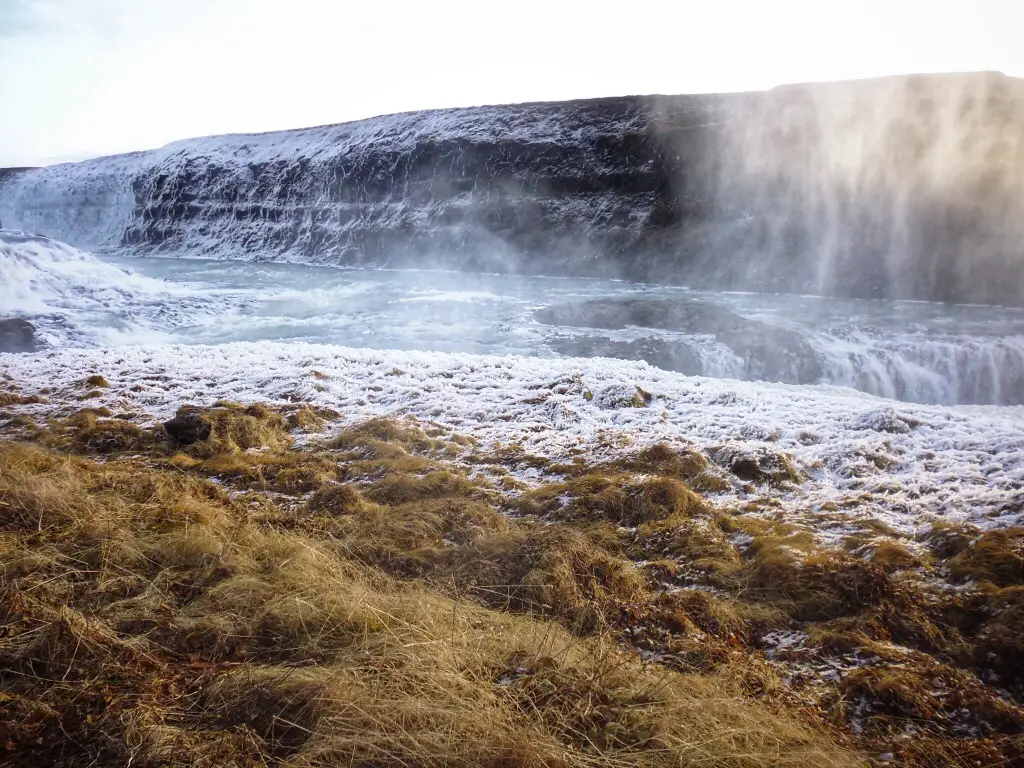
Is April the best or worst time to visit Iceland?
If you are visiting Iceland in April, you will get the chance to see the country emerge out of it’s winter slumber. Spring is in the air, the flowers start to bloom, and the country comes to life.
Daylight hours are long (although not as long as the summer months to be fair). The sun rises at about 6.45am and sets at 8.15pm. Although by the end of the month this changes to sunrise at 5am and sunset at 9.45pm.
Temperatures start to increase with an average somewhere between 1 and 6 degrees Celsius. That being said, there is still a chance of snow in April, so you aren’t quite out of the below freezing woods just yet.
It’s still possible to see the northern lights at this time of year, but this will be a bit later than January and February.
Overall April is the best time of year to visit Iceland if you want less crowds, and are happy to base yourself in places like Reykjavik. You can easily book tours from here, as the country is more accessible than the winter months. We still wouldn’t recommend driving, due to the unpredictable weather.
However April is the worst time of year to experience the midnight sun, or to do a road trip.
Is May the best or worst time to visit Iceland?
With longer days and milder temperatures May is a popular time of year to visit Iceland. That being said, it is still possible to nab a good deal as the peak summer travel season has not yet started.
Temperatures sit at a mild (for Iceland anyway) 4 – 10 degrees Celsius. While it can still be a bit nippy in Iceland, the worst of the winter cold has well and truly passed. You should still dress appropriately, but the chances of the weather going below freezing are a lot less.
Some mountaintops may be snowy but in general, snow across the country has melted, and spring has sprung!
Throughout May the sun rises between 5am at the beginning of the month, and 3.30am towards the end. The sun sets between 10pm, and 11.30pm. It basically never really goes properly dark at this time of year. So if you want to see the northern lights, you have no chance.
At this time of year road trips become a lot easier, although you should still take care with unpredictable weather. It’s also a good time of year for hiking, and other outdoor activities. It’s also the best time of year for fishing, if that is something that interests you. Although there are very strict fishing laws in Iceland so do your research, or book a tour to be safe.
There are a few public holidays in Iceland in May, so keep this in mind when booking accommodation.
Overall May is the best time to visit Iceland if you are trying to get some good accommodation and flight deals, but still enjoy long daylight hours.
It is the worst time to visit Iceland though if you want to see the northern lights, or partake in other winter activities.
Is June the best or worst time to visit Iceland?
June is when you will start to see things get incredibly busy and crowded in Iceland. Flights are more expensive, as is accommodation. If you are hoping to visit at this time of the year you definitely need to book things well in advance.
Temperatures are warm – or at least they are warm for Iceland. You are looking at an average temperature between 7 and 12 degrees Celsius.
June is the first month of the year where we would recommend doing a road trip across the country. The roads are a lot safer and ice and snow begin to thaw.
The summer solstice falls in June on the 21st of the month, and on this day the sun technically does set, but you kind of get this twilight effect, which is amazing to see. In the month of June you typically get 20-24 hours of daylight, which again is something incredible to experience.
It’s also worth noting that Iceland’s independence day falls on the 17th of June. There are parades on this day, and a lot of traditional Icelandic customs are embraced
Overall June is one of the best times to visit Iceland if you want to experience the phenomenon known as the midnight sun.
It is however the worst time of year to visit Iceland if you want cheap accommodation, and less crowds.
Is July the best or worst time to visit Iceland?
July is when you will start to see Iceland really come to life. You get long days and short nights, which means a lot of daylight hours to explore. At the beginning of the month you won’t see the sun between about midnight, and 3am. Towards the end of the month you are looking at a 10.30pm sunset and 4.30am sunrise.
Apart from June, July is the only other month in Iceland where you can experience the midnight sun. So this does make it a popular time for tourists to visit. Accommodation can be quite expensive at this time of years, and tours can book up fast, so you need to plan your visit well in advance to get the best deals.
Temperatures are incredibly mild in Iceland ranging between 8 and 15 degrees Celsius. So you definitely need to pack appropriate clothing.
Overall July is the best time of year to visit Iceland if you want to take advantage of seeing the midnight sun. It’s also perfect for road trips, and other outdoor activities like hiking.
However July is the worst time of year to visit Iceland if you want to avoid the crowds, and are expecting cheap accommodation.
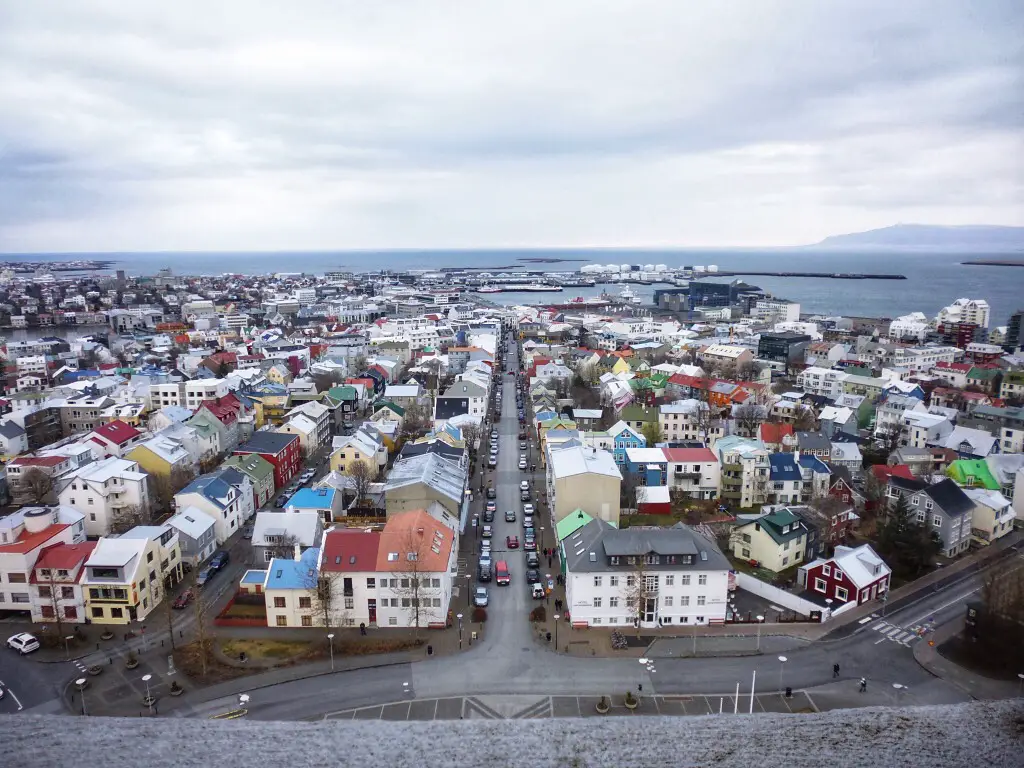
Is August the best or worst time to visit Iceland?
Alongside July, August is the hottest month in Iceland. But before you whip out the bikini and the beach towel you should probably note that temperatures range between 8 and 14 degrees Celsius. So still pretty mild in the scheme of things.
This is when you will start to see daylight hours decrease as well, with an average of 18 hours light. The midnight sun ends in August, although you will get to experience it at the start of the month. If this is something you really want to see make sure you visit early August.
Iceland as a whole is incredibly green at this time of year. It’s the perfect time for hiking, or taking a road trip across the country.
August is a popular month to visit with school summer holidays in Europe and the USA falling in the month of August. For this reason you will experience crowds of people.
The first Monday of the month is a bank/public holiday called the Merchant’s Holiday. There are also a few sporting events on in August across the country like Thjodhatid held in the Westman Islands. There is also swamp soccer in Isafjordur.
Overall August is the best time to visit Iceland if you want to do outdoor activities, and make the most of the long bright days.
However it is the worst time to visit Iceland if you want to see the Northern Lights, or are looking for a budget holiday.
Is September the best or worst time to visit Iceland?
After the excitement and popularity of Iceland in the summer months, September is when you start to see the crowds and tourist numbers dwindle. That’s not to say it isn’t still busy, but just less so than June, July, and August.
The landscape starts to feel very autumnal, and this is your last chance to do any summer type activities, like road trip, or visit some of the most secluded parts of the country. Although that being said by mid to late September a lot of these activities are not possible as they finish for the summer season.
Flights and accommodation will be slightly cheaper than the summer months, particularly if you are visiting towards the end of the month. There are less crowds as well.
The Reykjavik International Film Festival – RIFF usually takes place in September each year, which is perfect for creatives.
The days are bright and long towards the beginning of the month. Sunrises at about 6.10am and sets at 8.40pm. This is still a decent amount of daylight to do tours and explore. Towards the end of the month you are looking at sunrise at 7.30am, and sunset at 7pm.
Temperatures start to drop with averages between 6 and 11 degrees Celsius. You should pack accordingly, but the good news is, snow isn’t common at this time of year, apart form on the tops of mountains.
September is the best time to visit Iceland, if you are wanting to do some summer tours or road trips, but also want to see the northern lights.
However September is the worst time to visit Iceland if you are expecting warmer weather, and long bright days.
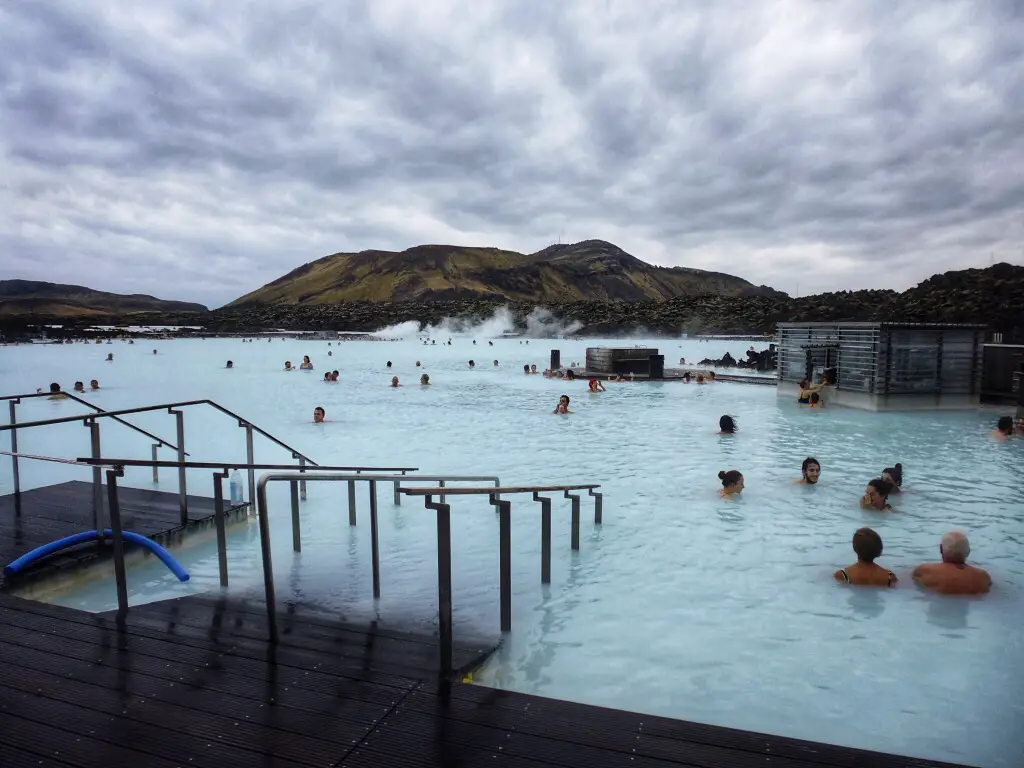
Is October the best or worst time to visit Iceland?
October can be a decent time of year to visit Iceland, depending of course on what kind of holiday you are after. The summer rush is well and truly over, but the freezing cold of winter is yet to kick in fully.
It’s also one of the cheaper times to visit Iceland with flights and accommodation finally dropping from the peak summer prices.
Temperatures average between 2 and 7 degrees Celsius, and you will start to notice the cold kicking in. But temperatures generally remain above freezing, especially in Reykjavik.
The weather can be quite unpredictable, and the chance of rain is high in October, so keep this in mind when visiting. It’s also notorious for being really windy.
The sun rises around 7.40am at the beginning of the month, and sets at closer to 7pm. By the end of October you are looking at a 9.10am sunrise, and a 5.15pm sunset. As you can see around the end of October your daylight hours are becoming limited. On the plus side, this makes it a great time of year to see the northern lights.
Is November the best or worst time to visit Iceland?
November is when you will start the see temperatures drop back below freezing in Iceland. On average you are looking at 4 degrees Celsius at the highest and minus 1 at the lowest. Although in our experience it definitely gets colder.
You should also be aware that daylight hours in November are quite limited. Sunrise is about 10am at some points of the month, and sunset is 4pm. There are still tons of great activities you can do, but your daylight hours to do them will be shorter than other times of the year.
One of the best festivals happening in Novermber in Iceland is Iceland Airwaves. All the bars, cafes, galleries, etc in the country turn into music venues with performers throughout the day.
Overall November is the best time to visit Iceland if you want to see the northern lights, or get cosy in a cafe.
However it is the worst time to visit Iceland if you want to make the most out of the long daylight hours.
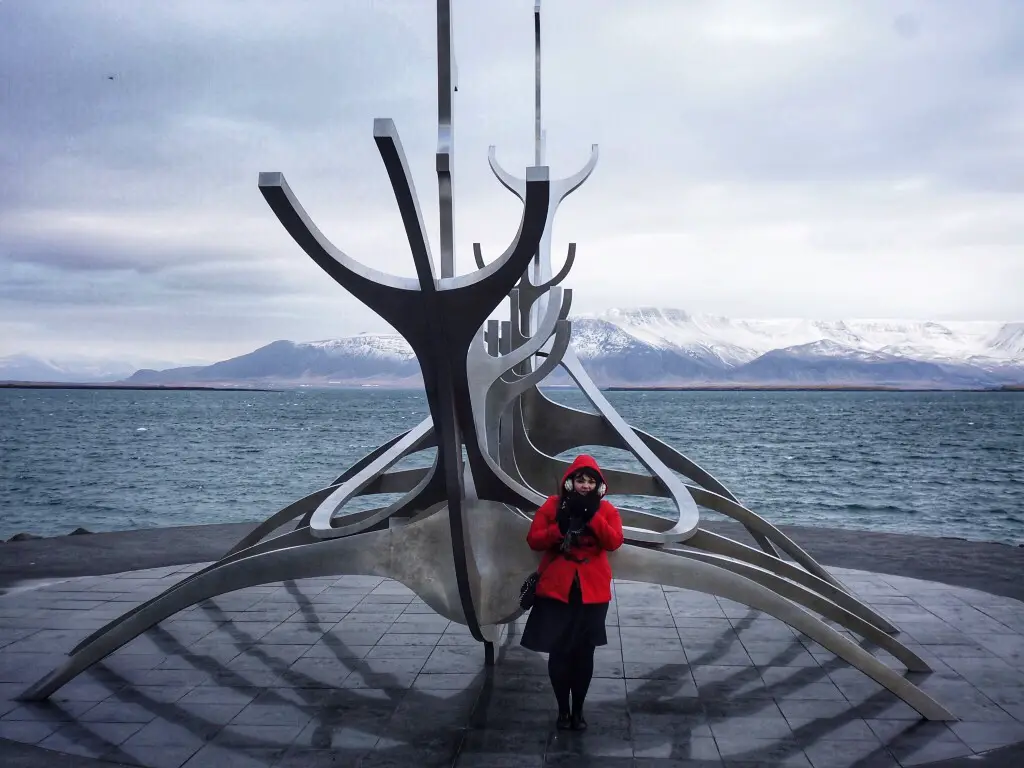
Is December the best or worst time to visit Iceland?
As you would expect December is a cold month with temperatures reaching a high of 3 and a low of minus 2 degrees Celsius. It’s also a dark month with about 20 hours of darkness each day.
On the plus side this is perfect for seeing the northern lights. There is also a real Christmassy and cosy feel to the month. You can also watch as the country is transformed into a literal winter wonderland.
You should take care when visiting in December just because the weather can be treacherous at times, especially if you are out hiking for instance.
December is the best time to visit Iceland if you want to get in the Christmas spirit and want minimal tourist numbers.
However December is the worst time to visit Iceland, if you are wanting to experience more than 4-5 hours of daylight.
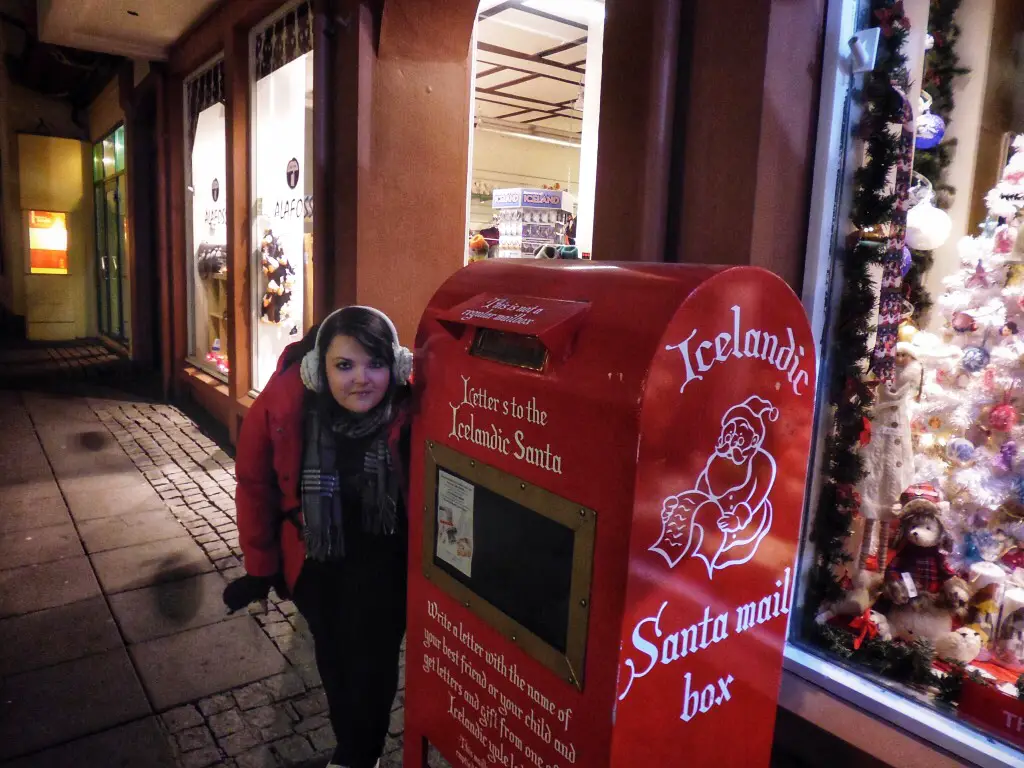
Conclusion: The best and worst time to visit Iceland
Hopefully this article has been useful for you when determining the best and worst time to visit Iceland. Here is a final recap of some of the best and worst times to visit Iceland in our opinion.
Iceland is one of those places that you can honestly visit year round. It really just depends on what you are hoping to get out of your trip.
Overall the best time to visit Iceland is June, July and August, particularly if you are wanting to explore the natural beauty the country has to offer.
October is also a good time to visit if you are wanting to see the northern lights, and get cheaper flights and accommodation.
The worst time to visit Iceland is in our opinion December and January. The weather isn’t great, and daylight hours are limited. Also July and August in particular are really busy and expensive, so if you want a budget trip these are not ideal times to visit.
Whilst we have gone through the best and worst time to visit Iceland, there are positives and negatives whenever you visit. And whenever you do decide to visit Iceland no matter what time of year the good news is, you will always find something to do.
If you found this guide useful you can pin it below to look back at later.
Happy Travels!
